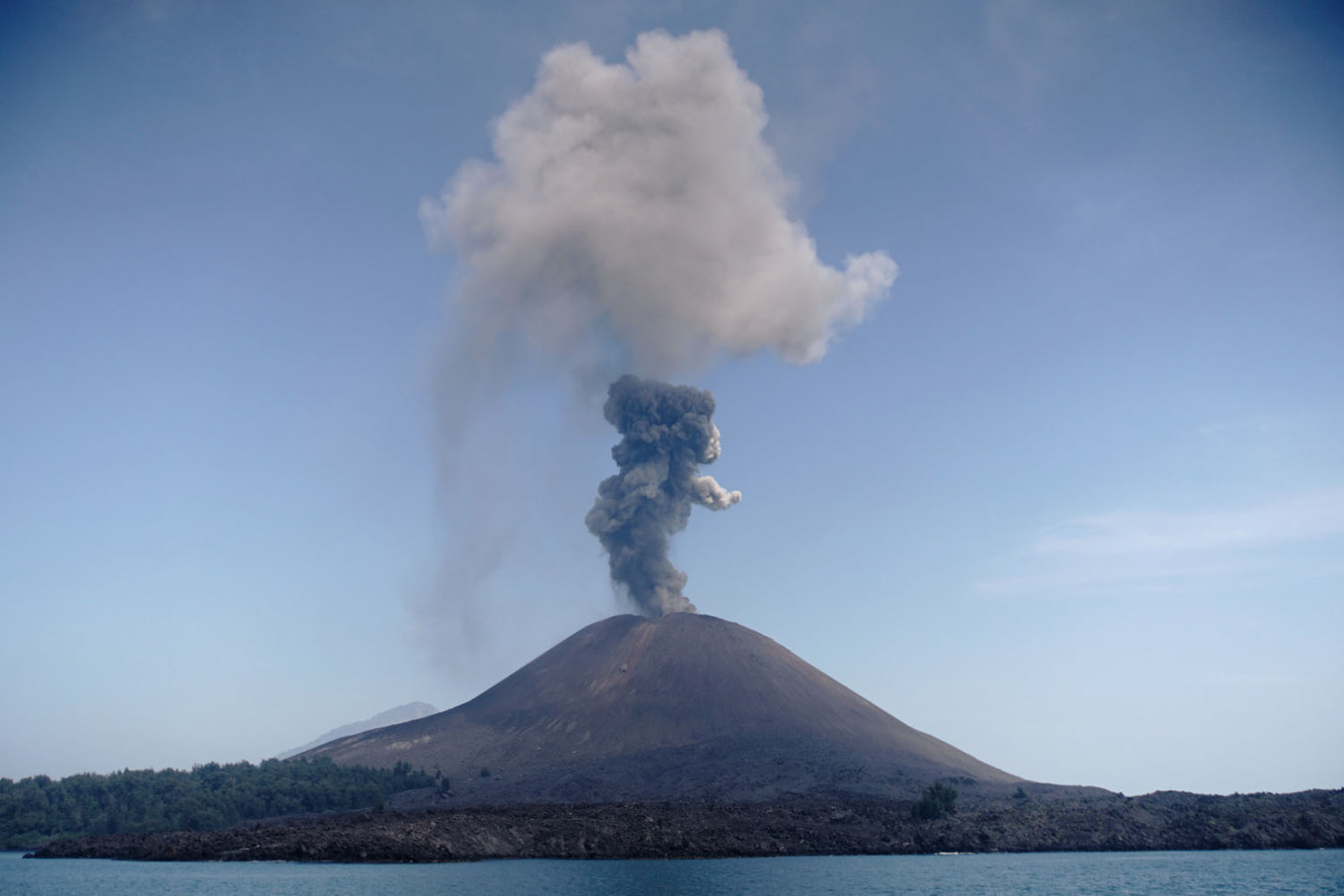Tsunami survivors recall higher waves, louder rumbles, brighter lava from Anak Krakatau

Credit to Author: clopez| Date: Wed, 26 Dec 2018 10:33:50 +0000
PANDEGLANG, Banten, Indonesia — For residents living on the west coast of Java Island, the eruptions that came from Anak Krakatau in the Sunda Strait prior to a tsunami that struck the area on Saturday were nothing out of the ordinary. They said the volcano was only “coughing” and that it was nothing to worry about.
But that day, Walid, 27, a fisherman, felt something different.
“I was fishing when the tsunami occurred,” said the resident of Panimbang district in Pandeglang regency, Banten.
It began as a regular evening: He set sail with other fisherfolk, going kilometers into the sea, then began fishing.
“I noticed that there was something different with the [Anak Krakatau] volcano that evening. The rumbling sounds were different and the lava at its top shone brighter,” he said.
Since June, Anak Krakatau has erupted every day, sometimes 99 times a day, according to the Center for Volcanology and Geological Hazard Mitigation (PVMBG).
Even though the volcano had been rumbling and spewing ash over the past six months, Walid said he and his fellow fisherfolk never worried about going fishing every night.
When the clock struck at around 9:00 p.m. on Saturday, Walid saw fiery lava spit out from the volcano. Slowly, he began to feel the sea level fall and noticed that waves at the far shore had turned white.
“I thought it was the reflection of the full moon. But then the sea surface rose up in a very short time. That was when I realized something terrible would happen,” he said.
“Some 20 or 30 minutes later, the waves around my boat grew stronger. I was with three other fishermen on my boat and there were 10 other boats near me. In panic, we controlled our boat in a way as to not to get carried to the shore.”
Walid and his fisherfolk friends were witnesses to what the Meteorology, Climatology and Geophysics Agency (BMKG) called an abnormal tidal wave surge due to a full moon and a tsunami that was triggered by an underwater landslide after the eruption of Anak Krakatau.
“The waves were back to normal around an hour later. We continued catching fish and went back to the shore at 7 a.m. [on Sunday] to find that our kampung had been engulfed by seawater,” he said.
Not many buildings were damaged there, Walid said, but people chose to leave their houses. “My family has gone to a hill in Serang. I’m staying here.”
The roads in Panimbang district, a tourist destination, were deserted a day after the disaster. But the mosque there, Ar-Raudoh mosque, was packed with people fleeing their homes for safety. Adults, elders, kids and babies all slept on the mosque’s second floor.
Other survivors shared similar accounts of how the disaster went. They first felt that something was off in the afternoon, hours before the disaster. Some even moved to higher ground at dusk.
The Ar-Raudoh marbot (mosque keeper), Aep Saepulloh, said the volcanic activity could be seen from the mosque’s rooftop.
“Some kids played on the rooftop [on Saturday afternoon] and then told their parents about the volcano’s lava. It was daylight but the lava was very noticeable,” he said.
“Later, a tidal wave hit and inundated some houses, which we believed was due to the full moon. Just three hours later, the tsunami hit,” Aep told The JakartaPost.
Some 200 families stayed at the mosque on Saturday night. The number halved the following night as many of them sought refuge at their relatives’ houses in higher places.
“We will probably stay here for three or four days, depending on the waves and the weather,” Aep added.